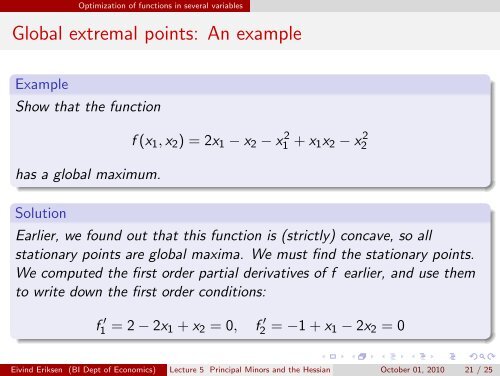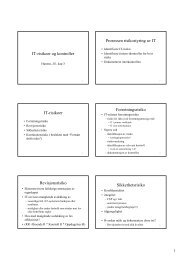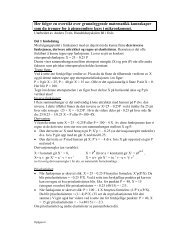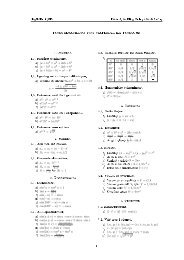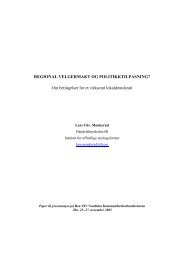Lecture 5 Principal Minors and the Hessian
Lecture 5 Principal Minors and the Hessian
Lecture 5 Principal Minors and the Hessian
Create successful ePaper yourself
Turn your PDF publications into a flip-book with our unique Google optimized e-Paper software.
Optimization of functions in several variables<br />
Global extremal points: An example<br />
Example<br />
Show that <strong>the</strong> function<br />
has a global maximum.<br />
f (x 1 , x 2 ) = 2x 1 − x 2 − x 2 1 + x 1 x 2 − x 2 2<br />
Solution<br />
Earlier, we found out that this function is (strictly) concave, so all<br />
stationary points are global maxima. We must find <strong>the</strong> stationary points.<br />
We computed <strong>the</strong> first order partial derivatives of f earlier, <strong>and</strong> use <strong>the</strong>m<br />
to write down <strong>the</strong> first order conditions:<br />
f ′<br />
1 = 2 − 2x 1 + x 2 = 0, f ′<br />
2 = −1 + x 1 − 2x 2 = 0<br />
Eivind Eriksen (BI Dept of Economics) <strong>Lecture</strong> 5 <strong>Principal</strong> <strong>Minors</strong> <strong>and</strong> <strong>the</strong> <strong>Hessian</strong> October 01, 2010 21 / 25


